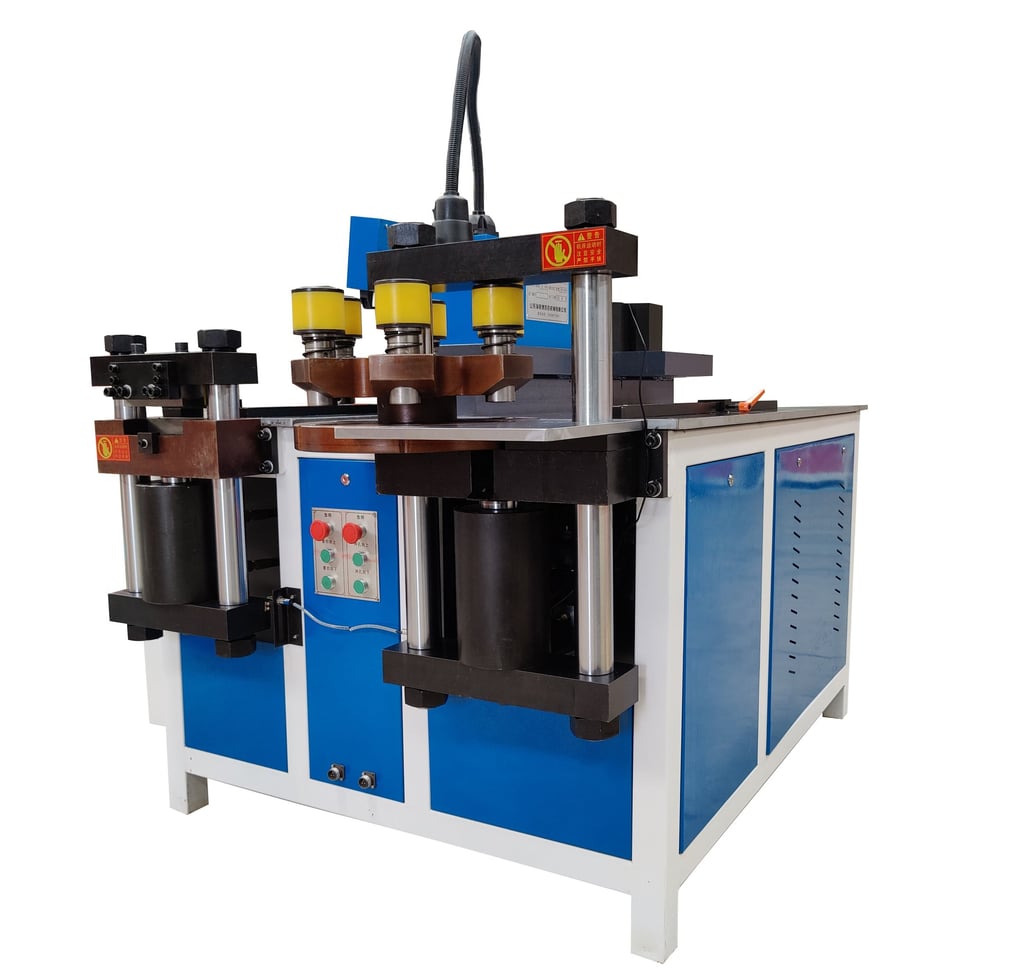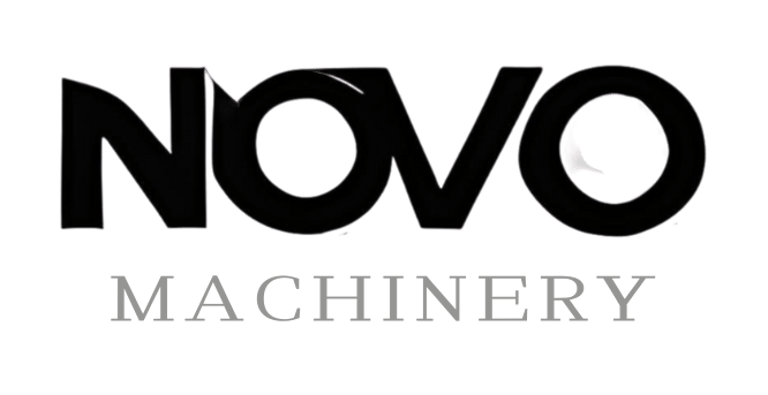A Must-See for Factories with Annual Output Value Below 30 Million: How Can Busbar Processing Machines Help Thai/Philippine Factories Save 30% Labor Cost?
7/5/20255 min read


Understanding Busbar Processing Machines
Busbar processing machines are specialized equipment designed to automate the production and processing of busbars, which are conductive material strips used for distributing electrical power. These machines play a crucial role in the electrical industry, where efficient power distribution is paramount. Typically made from copper or aluminum, busbars are essential in various applications, including electrical substations, switchgear, and large-scale industrial plants.
The operation of busbar processing machines involves several key functions, such as cutting, bending, drilling, and punching of the busbars. Each task is executed with high precision and speed, significantly enhancing production efficiency and minimizing labor costs. These machines are equipped with advanced technology, including numerical control (NC) systems, which allow for precise programming and settings adjustments. This automation ensures consistency in the quality of the finished product and drastically reduces the likelihood of human error.
Components of a typical busbar processing machine include the mainframe, feeding mechanism, and various processing tools. The mainframe supports the integration of all essential parts, while the feeding mechanism ensures that the busbar is fed into the machine at the right speed and position for processing. Additionally, these machines can be tailored with optional technologies, such as automated inspection systems, to further enhance quality control.
Due to their capacity to streamline production, busbar processing machines are becoming increasingly popular in factories, particularly those with an annual output value below 30 million. Their ability to drastically reduce labor costs while maintaining high levels of output makes them an attractive investment for manufacturers facing financial constraints. In summary, understanding the functionality and advantages of these machines is critical for factories aiming to optimize their production processes and enhance cost-effectiveness.
The Labor Cost Challenge in Thai and Philippine Factories
Factories operating in Thailand and the Philippines, particularly those with an annual output value below 30 million USD, are currently grappling with significant labor cost challenges. These challenges are accentuated by the increasing expenses associated with maintaining a workforce, which can dramatically affect overall profitability. The labor market in both countries has been experiencing a notable rise in wages, driven by higher living costs and the demand for skilled labor, thus compelling factories to reassess their operational strategies.
One major issue contributing to the rising labor costs is the persistent skill shortages. Many factories struggle to find adequately trained employees who can efficiently perform specialized tasks. This shortage forces businesses to either offer higher wages to attract qualified candidates or invest in extensive training programs, further increasing operational expenses. Consequently, factories are often left with a workforce that is either overburdened or inadequately skilled, which can lead to decreased productivity and operational delays.
The impact of these labor cost challenges is pronounced. High labor expenses not only diminish profit margins but also hinder the ability of factories to remain competitive in the market. As factories strive to balance quality and cost, they must consider the implications of rising wages on their business operations. Additionally, the inability to maintain a fully efficient workforce due to skill gaps exacerbates these challenges, ultimately affecting output levels and service delivery.
In this context, the need for automation and enhanced efficiency becomes apparent. Implementing technologies such as busbar processing machines can substantially reduce reliance on manual labor, thus alleviating the financial burden that comes with rising labor costs. Factories that address these challenges through automation are more likely to improve productivity and sustain profitability in an increasingly competitive landscape.
Benefits of Implementing Busbar Processing Machines
The integration of busbar processing machines into factory operations presents several compelling advantages, particularly for factories with an annual output value below 30 million. One of the most significant benefits is the potential to achieve a reduction in labor costs by up to 30%. This is primarily facilitated by minimizing the reliance on manual labor, which not only cuts down the number of workers required but also simplifies the overall workflow. With busbar processing machines automating various steps in the production process, manufacturers can redirect their workforce to more value-added activities, enhancing overall operational efficiency.
Moreover, these machines significantly reduce the skill requirements for operators. Traditional busbar production often necessitates highly skilled labor to perform manual processes such as bending, cutting, and drilling. However, with the advent of busbar processing machines, these tasks can be completed with higher levels of accuracy and speed, requiring less specialized training. This shift enables factories to hire workers with less technical expertise, further contributing to labor cost savings.
In addition to labor cost reductions, busbar processing machines improve precision in manufacturing. Automated systems utilize advanced technology to ensure that each product is crafted with exact measurements and consistency. This precision minimizes the potential for errors, leading to reduced waste and lower material costs. Furthermore, enhanced production speed is another notable benefit of these machines. Factories can expect to increase their output while maintaining quality, thus meeting customer demands more effectively.
Collectively, these advantages boost not only operational efficiency but also the overall quality of output. By streamlining the production process through the use of busbar processing machines, firms can improve product reliability and satisfaction among clients. The overall impact on factory operations is decidedly positive, as the combination of reduced labor costs, enhanced precision, and increased productivity provides a strong case for adopting this technology.
Case Studies and Success Stories
In recent years, several factories in Thailand and the Philippines have embraced the adoption of busbar processing machines, yielding substantial improvements in operational efficiency and reduced labor costs. These case studies illustrate not only the remarkable potential of busbar technology but also the strategic implementation processes that have led to enhanced profitability.
For instance, a mid-sized electronics manufacturer in Thailand faced significant challenges with manual busbar production, resulting in high labor costs and prolonged lead times. After integrating a busbar processing machine, the factory experienced a 30% reduction in labor expenses while also doubling the output efficiency. The automation capabilities of the machine eliminated manual errors, leading to a higher quality of products and reduction of waste. With a streamlined production line, management reported improved turnaround times and overall customer satisfaction.
Similarly, a metal fabrication plant in the Philippines struggled with inconsistent production rates and escalating labor costs. The decision to invest in a busbar processing machine transformed their operations. Before the investment, the labor force consisted of numerous skilled workers, resulting in a high wage bill. Post-implementation, the factory was able to operate effectively with a leaner workforce, thanks to the speed and precision of the equipment. Initial barriers, such as the need for workforce retraining and machine calibration, were systematically addressed through a comprehensive training program, which proved to be pivotal in ensuring a seamless transition.
These successes highlight the importance of not only adopting technological solutions but also of having a well-structured implementation strategy. When investing in busbar processing machines, factories should consider expectations versus reality, focusing on achievable goals that enhance operational efficiency while mitigating risks. By learning from these case studies, other manufacturers can gain valuable insights into effective practices that ensure successful adaptation and maximize the potential of busbar processing technology.
Innovate
Leading manufacturer of busbar processing equipment solutions.
Contact
Support
+131 2713 4627
© 2025. All rights reserved.
